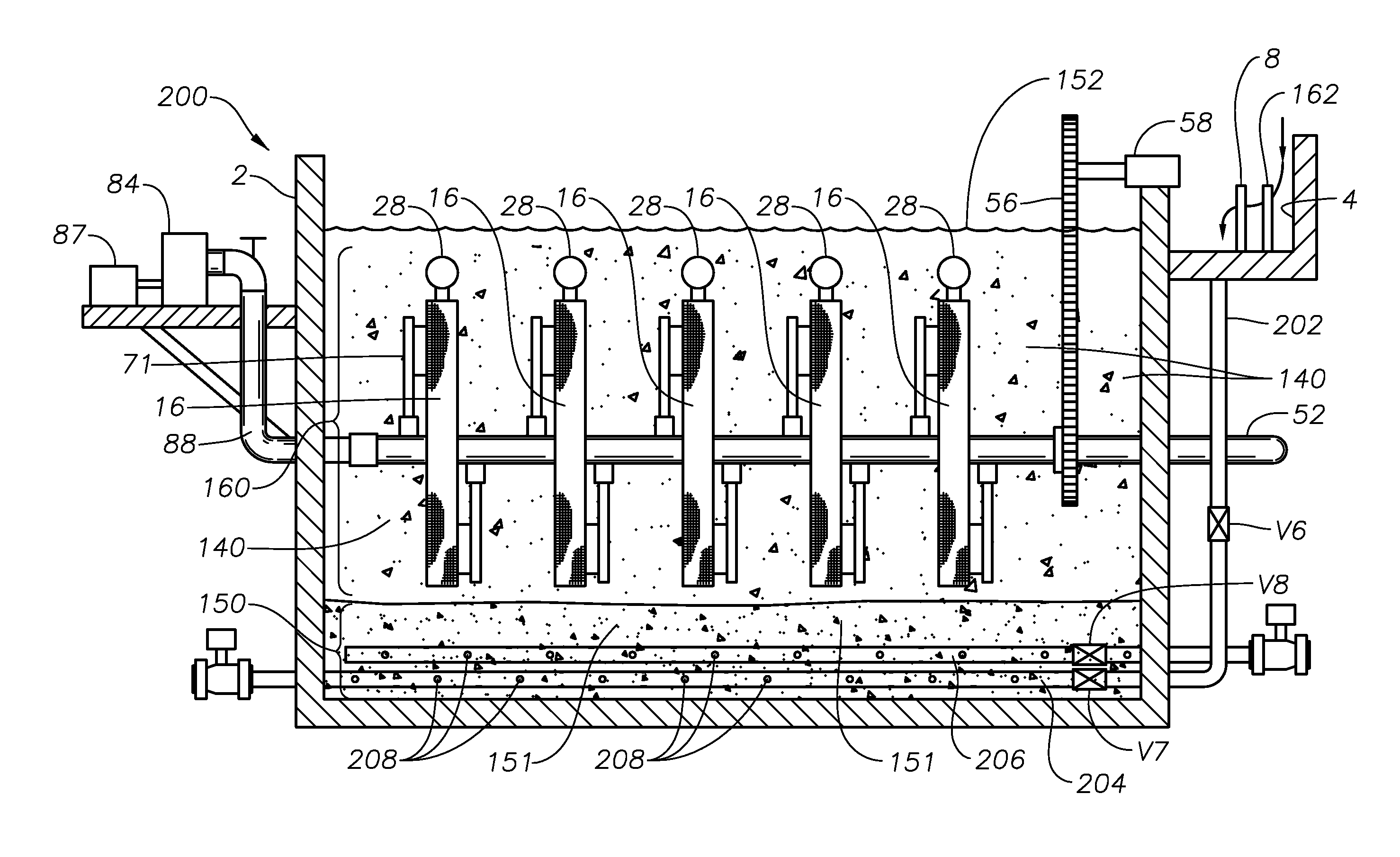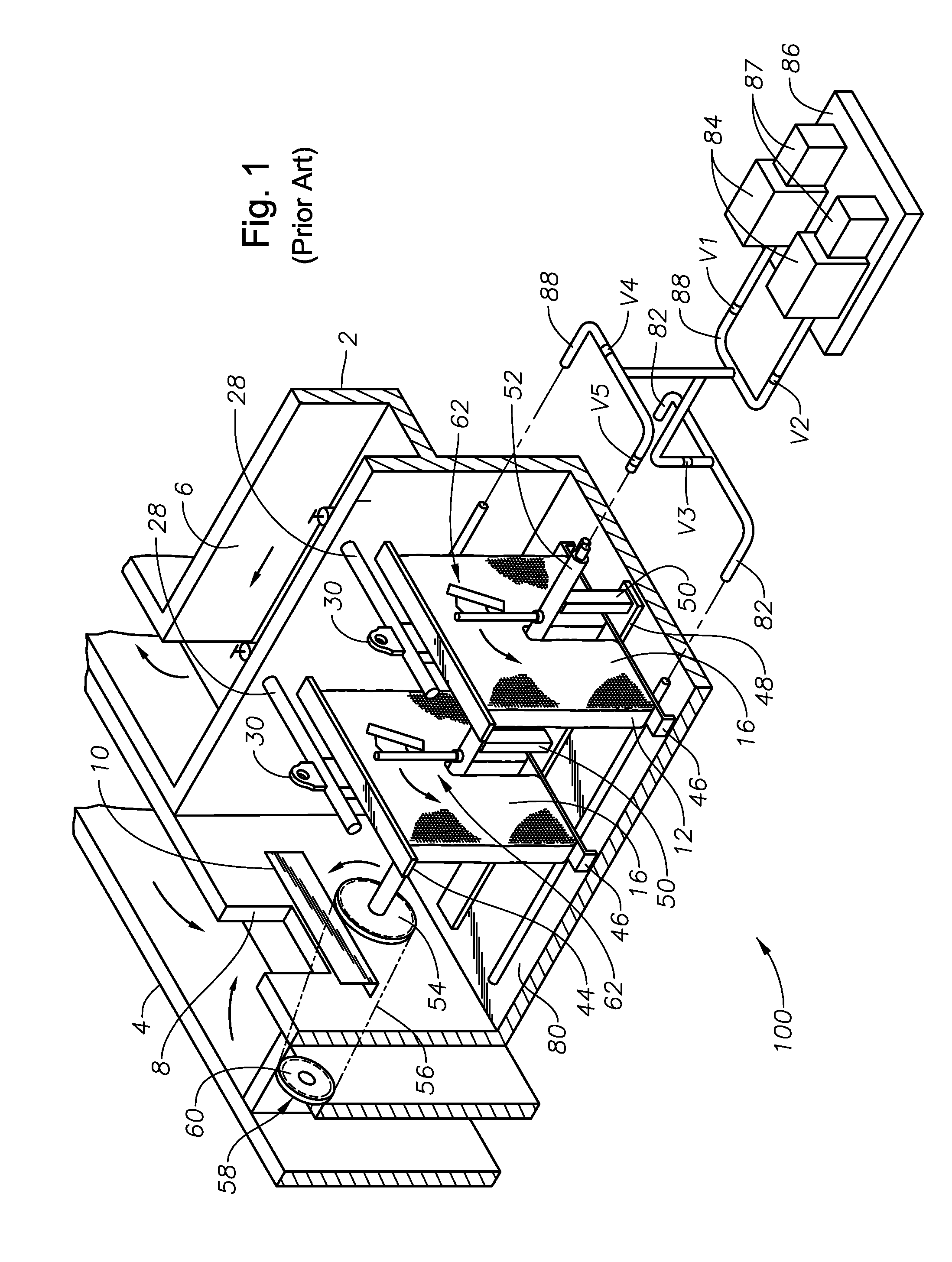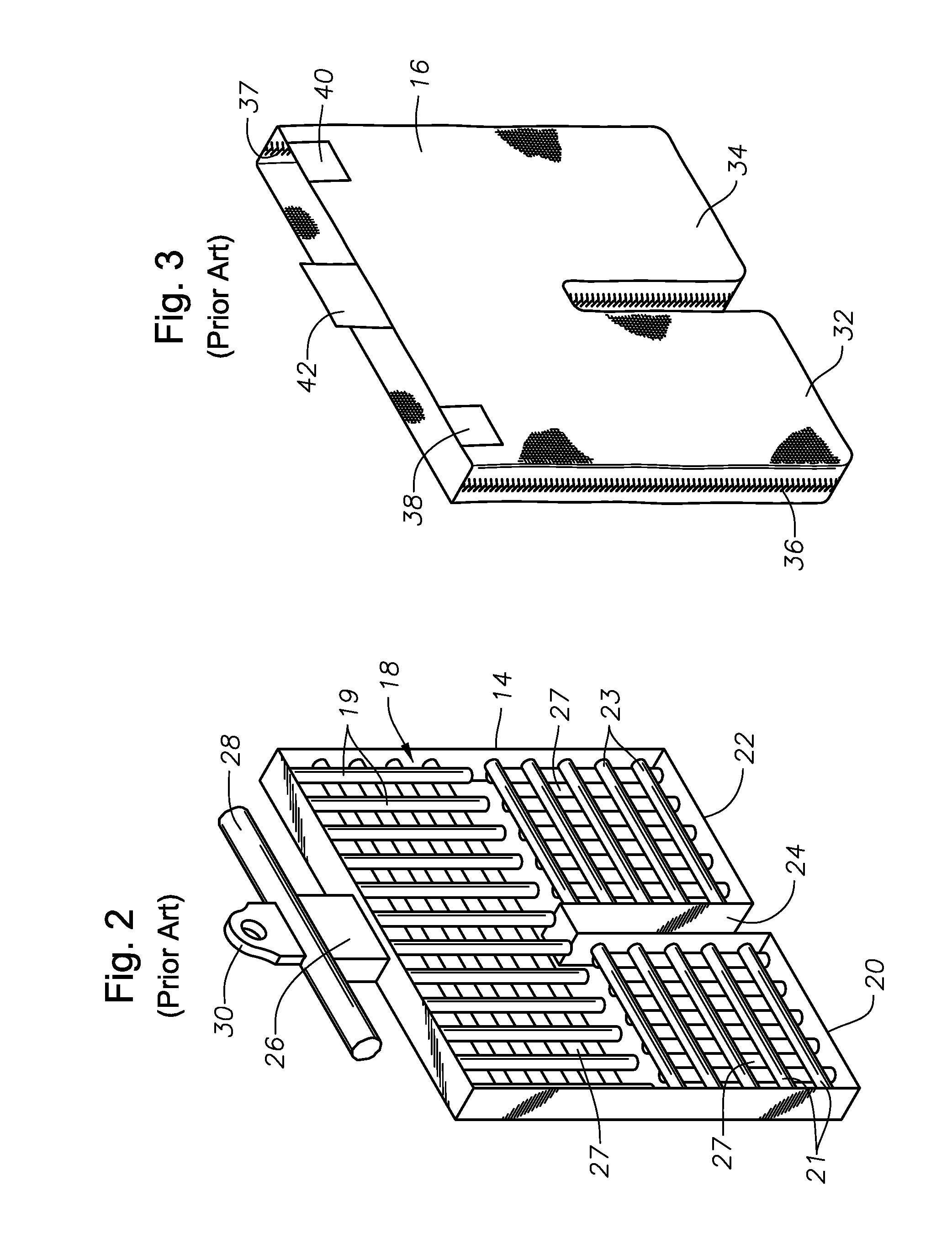Methods and apparatus for treating water and wastewater employing a cloth disk filter
- Summary
- Abstract
- Description
- Claims
- Application Information
AI Technical Summary
Benefits of technology
Problems solved by technology
Method used
Image
Examples
embodiment 100
[0057]For comparison purposes, FIGS. 1-4 illustrate schematically a prior art cloth disk filter embodiment 100, which was described previously in the background section. As indicated previously, prior art embodiment 100 does not include facilities allowing screened water or wastewater to flow upward through sludge blanket region 150 formed on the bottom of vessel 2, nor does it teach or suggest backwash assemblies comprising backwash arms that are able to clean substantially all of the filter cloth surface. As used herein, “substantially all of the filter cloth surface” means 90 percent, or 95 percent, or in certain embodiments, 100 percent of the filter cloth surface.
[0058]The inventors herein have conceived methods and apparatus utilizing a combination of a sludge blanket and a cloth disk filter, and have further conceived cloth disk filter apparatus and methods of using same wherein substantially all of the cloth filter surfaces are backwashed (with or without the sludge blanket ...
embodiment 600
[0063]FIG. 10 illustrates backwash arm 318 just beginning its movement upward along cassette 12 and dirty filter cloth 16. FIG. 11 illustrates backwash arm 318 almost finished making a sweep upwards. Note that filter cloth 16 behind (below) backwash arm 318 is now clean. As may be appreciated, substantially all of filter cloth 16 is cleaned using this apparatus and method. A backwash pump may not be required, nor are complicated rotation mechanisms. It will be understood that the backwash features of embodiment 600 may replace the backwash features illustrated in the prior art cloth disk filter embodiment illustrated in FIG. 1, and may be practiced without the sludge blanket feature described herein, in other words where influent enters the top of the vessel 2, as in the embodiments illustrated in FIG. 1.
[0064]FIG. 12 is a schematic cross-sectional view, and FIGS. 13 and 14 are schematic end elevation views, respectively, of another cloth disk filter embodiment 700 in accordance wit...
PUM
| Property | Measurement | Unit |
|---|---|---|
| Flow rate | aaaaa | aaaaa |
| Concentration | aaaaa | aaaaa |
| Flexibility | aaaaa | aaaaa |
Abstract
Description
Claims
Application Information
 Login to View More
Login to View More - R&D
- Intellectual Property
- Life Sciences
- Materials
- Tech Scout
- Unparalleled Data Quality
- Higher Quality Content
- 60% Fewer Hallucinations
Browse by: Latest US Patents, China's latest patents, Technical Efficacy Thesaurus, Application Domain, Technology Topic, Popular Technical Reports.
© 2025 PatSnap. All rights reserved.Legal|Privacy policy|Modern Slavery Act Transparency Statement|Sitemap|About US| Contact US: help@patsnap.com



